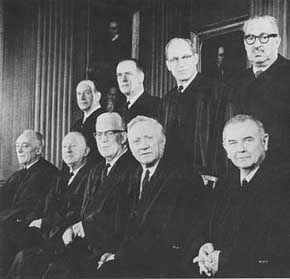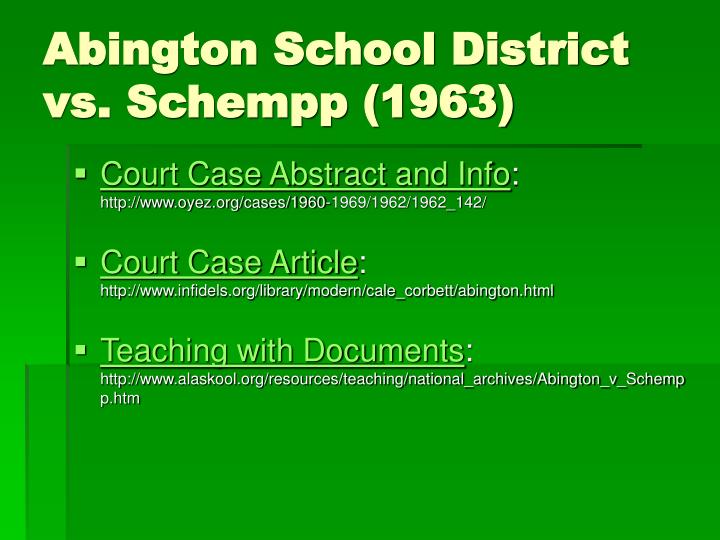

That a child is offered an alternative may reduce the constraint it does not eliminate the operation of influence by the school in matters sacred to conscience and outside the school's domain.

Allowing religious teachers in the school gave them a "captive audience" and made illegal use of taxpayers dollars. In McCollum, the Court found the plan to be unconstitutional. In Zorach, a New York City plan called for students to be released from school instruction to attend religious classes off school grounds. plan allowed for religious teachers to come into the schools and conduct religious classes. In these cases, states had created plans whereby students would be allowed time for religious instruction during school time. We turn first to the "released time" cases, McCollum v. The second line of cases concerns state-mandated prayer. One line concerns "released time" programs that let children out of school to be attend religious education either at the school, or elsewhere in the community. Two lines of cases have defined most of the law surrounding prayer in schools. It was this ruling that ultimately led to the line of cases discussed here. In 1947, the Court held that the Fourteenth Amendment incorporated the establishment clause of the First Amendment ( Everson v. The Court began incorporating the Bill of Rights in the late 1800s. Rather, the Court became involved only after it has settled the issue of whether the Fourteenth Amendment incorporated portions of the Bill of Rights (i.e., made the Bill of Rights applicable to the states). But the Court was not silent, as some might try to argue, because it approved of such practices. For most of our nation's history the Supreme Court did not get involved in state controversies concerning school prayer.


 0 kommentar(er)
0 kommentar(er)
